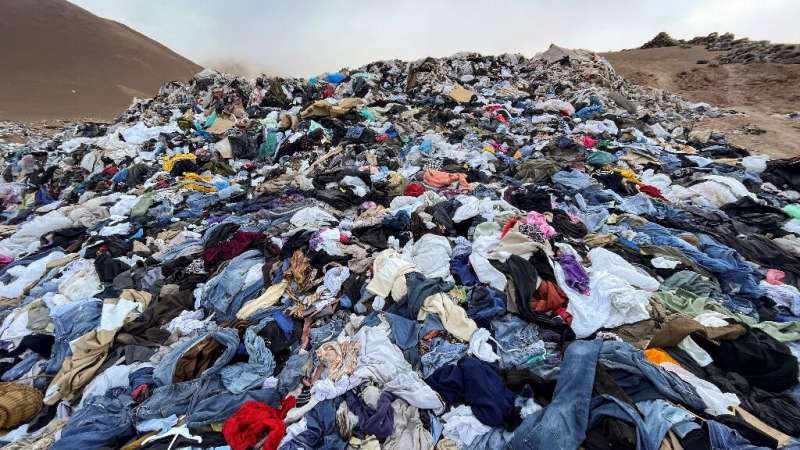Fast Fashion
At Chile’s Atacama Desert, piles of used clothes are discarded.
April 6, 2022
What is fast fashion?
According to Goodtrade, fast fashion, “Is a design, manufacturing, and marketing method focused on rapidly producing high volumes of clothing. Garment production utilizes trend replication and low-quality materials (like synthetic fabrics) in order to bring inexpensive styles to the public.”
What is wrong with fast fashion?
There is a massive mass production of clothing that is made cheap, low quality, and in addition to that it is also disposable clothing. As the clothing decreases in price, so does the quality of clothing. This creates an incentive for people to buy more, especially with trends. When trends are formed, clothing brands mass produce the item, creating a surplus amount of clothing that may never reach consumers or even stores.
Trends come about through social media. Celebrities and Influncers are what help create these trends which encouraged their followers to buy what they are wearing. In fact, “a recent survey found that almost 75% of 18-24 year olds believe influencers can be held somewhat accountable for the rise in disposable fashion.
How this plays an environmental aspect
There are a couple key components that make fast fashion extremely dangerous to the environment. Water usage, microfibers, and toxins all play a role within the fast fashion industry that worsens environmental issues . A fact more worrisome is that it takes around 200 years for our clothes to decompose, which means that Fast Fashion is polluting the planet more than we realize.
Excessive usage of water is one of the main environmental problems. “It takes 10,000 liters of water to produce one kilogram of cotton or approximately 3,000 liters of water for one cotton shirt. Furthermore, textile dyeing requires toxic chemicals that subsequently end up in our oceans.” Due to the toxic chemicals entering waterways it is extremely damaging to aquatic life. “Approximately 20% of the wastewater worldwide is attributed to this process, which accumulates over time.”
Due to many of the countries producing clothing not having proper environmental regulations, the untreated water being used is going into the rivers and the ocean, polluting the water, and killing off the wildlife.
Plastic microfibers are extremely dangerous to the environment. The most concerning types of plastic are microscopic— they travel through the air and are in waterways where the human eye can not detect them.
Polyester is now used in 60% of clothes, which is a common fabric when you see fast fashion occurring. Not only does this release toxins into the environment, but it also goes into the ocean, killing many wildlife from consuming the plastic microfibers.
Human Rights
With ever evolving trends that causes labor of clothing to increase which unfortunately, may lead to some factories becoming sweatshops. Sweatshops employ workers for a company that get paid very little to nothing, work long hours and unsafe work conditions. The problem with this is that brands find loopholes in national laws, finding countries that are corrupt to establish their factories allowing sweatshops to be established.
Have you ever thought of where your clothes are coming from? Well, 97% of our clothing is made from overseas. Many countries including China, India, Bangladesh, Vietnam, Indonesia, and many other countries that are guilty of human rights violations. They are guilty of human rights violations in relation to lengthy hours, unfair/uninhabitable working conditions, and unlivable wages. To avoid brands that violate these following things, do research and become informed.
How to prevent it
One of the best ways to prevent fast fashion is to change your buying habits. Here are some of the following ways you make a change…
- If a piece of clothing is ripped, try to fix it, patch it up, or sew it back together instead of throwing it away.
- Use a clothing rack or clothes line instead of drying your clothes this way they last longer.
- If you do decide to buy new clothes, try to avoid polyester because it is one of the top synthetic materials that nearly releases three times more carbon emissions.
- Instead of shopping at malls or online, visit local thrift, vintage, and consignment stores.
- DONATE, instead of throwing out your clothes!
- Do some research. If you do decide to shop at one of your favorite stores, be mindful of how environmentally friendly it is or isn’t.
Local Places you can donate:
Recycling Opportunities:








